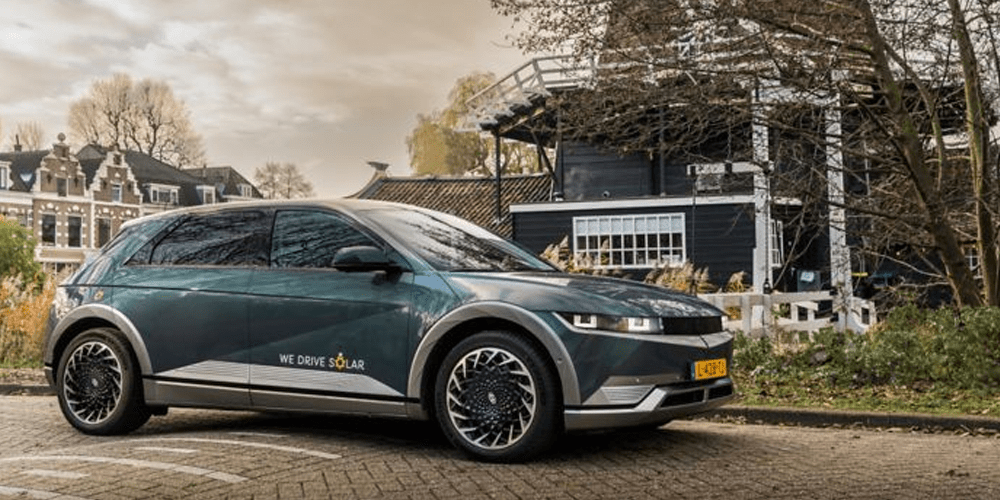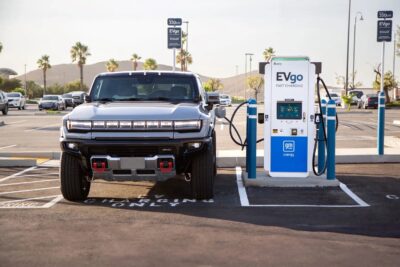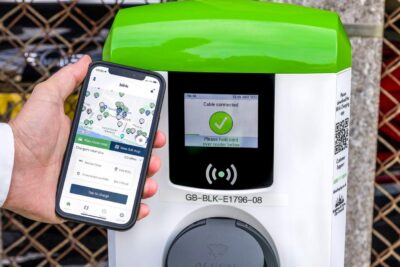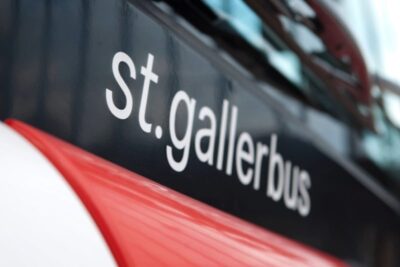Hyundai starts V2G project in Utrecht with Ioniq 5
Hyundai and We Drive Solar have started a Vehicle-to-Grid (V2G) charging project for electric car-sharing in Utrecht, the Netherlands. The two companies will initially deploy 25 Ioniq 5s equipped with V2G technology.
For the first phase of the Utrecht project was announced last year and involved electric 100 Sion electric cars that could be shared by the residents of a recently built housing estate. Until now these were still charged conventionally.
In this next step, the 25 Ioniq 5 modified for the V2G test will be charged via a public charging point developed by We Drive Solar. This allows the cars to function as storage for the solar energy generated from the rooftops of the buildings in the project. This energy can be fed back into the building and/or the grid when demand is high. The number of Ioniq 5 will be increased to 150 in the course of this year.
Earlier this month Hyundai revealed its plans to make the on-board charger from the Ioniq 5 suitable for bidirectional charging as well as plans for a new electric model equipped with V2G technology ex-works. This means that for the Ioniq 5 to engage with V2G capabilities, nothing has to be changed about the car except its software. The hardware is the same on-board charger as in any series model – this can either charge the car battery or direct the power in the car to other devices or power tools, for example. This bidirectional charging capability is called Vehicle-to-X (V2X) technology, whereby “X” can be anything that requires electricity.
Although this is technically closely related to Vehicle-to-Grid (V2G), it requires different software. Hyundai said earlier in April that order to exchange energy with the power grid in the context of V2G, a communication protocol between the BEV and the grid must first be defined.
The Sion electric cars used by We Drive Solar in the first phase of the project have solar cells integrated into their bodywork. The Ioniq 5 is also available with this as an option. However, the amount of energy gathered this way is not enough to run the car entirely and is limited by the available parking options for the car. If the car is parked in the shade or in a garage the solar panels cannot gather energy this way.
The city of Utrecht aims to become the first bidirectional city and region in the world. The pilot project is focussed on the Cartesius neighbourhood. In the new construction project, the area developers MRP and Ballast Nedam Development have built 2,530 flats. As usual in the Netherlands, the focus is on cycling and walking – active, low energy-use transport. If residents nevertheless have to resort to a car, they are granted access to one of the Ioniq 5 from the We Drive Solar electric sharing fleet – after which they return the car to the bidirectional charging station.
In this way, the vehicles’ batteries are to be used as storage for sustainable energy, which is also fed back into the grid when needed (while saving city space because they don’t all need their own cars and parking spaces). As a provider of electric sharing cars, We Drive Solar is involved in a number of new construction projects in the Netherlands. The aim is to achieve optimal cooperation between solar modules on building roofs, charging stations in the neighbourhood and the sharing cars.
“We are very proud to launch this project with We Drive Solar. At Hyundai, we believe that bi-directional charging in combination with V2G technology can turn battery-electric vehicles into flexible resources,” says the President and CEO of Hyundai Motor Europe, Michael Cole. “Ioniq 5 and V2G technology not only offer an alternative solution for customers looking to move away from traditional combustion engines, but also helps to increase the viability of renewable energy generation within the grid,” he explains.
Initially, the focus is very much on the neighbourhood where the sharing vehicles are to be stationed, but the city of Utrecht has already prepared for bigger things: In the past three years, more than 1,000 bidirectional charging points have been built throughout the region.





0 Comments